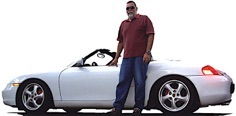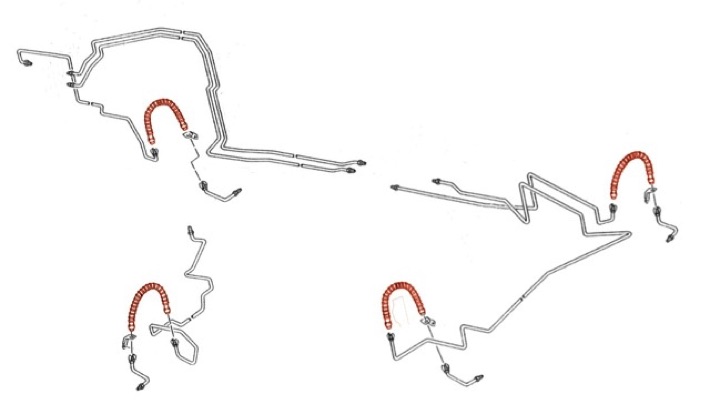


Published in the October 2015 issue of “Die Porsche Kassette”
Spongy, mushy or soft, are usually the words used to describe brake pedal feel that is not the normal, rock-hard pedal that we all expect in our Porsche.
When people get this symptom and either try to fit it by themselves or take it to the dealer or an independent shop the first thing is to physically inspect the brakes.
Make sure the rotors (surface and thickness) is up to spec, make sure the pads are the correct ones and that they have enough material (thickness). The brake caliper pistons should also be checked to make sure that they move in and out freely and that their dust covers are intact. The brake fluid level needs to be checked and most likely flushed. Porsche recommends flushing the brake fluid every 24 months. Make sure that there are no leaks in the system. Remember that on the 1997 and newer Porsches the clutch hydraulics use the brake fluid as well, so check the clutch hydraulic lines too.
If the inspection shows no problems then most likely the issue is with the flexible brake lines.
The brake lines are all hard, fixed, metal lines except for a short, flexible line at each wheel.
These flexible lines are the ones commonly referred to as brake lines.
Their function is to allow for the up-and-down movement of the suspension and as you can see they serve as a flexible bridge between the hard brake lines.
Because they have to be flexible they are generally made out of rubber with several layers to protect against abrasion.
They are actually quite strong, since typical brake fluid pressure is in the neighborhood of 1,500 psi but the one thing you may not know is that, like tires and brake pads, they are wear items.
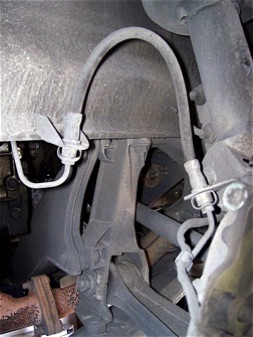
Think of it, every time you hit the brakes, enormous pressure builds up inside the line and on top of that, the line is being flexed constantly as the car’s suspension absorbs the imperfections in the road and the loads created by the car itself.
On top of all that, brake fluid is highly corrosive and very hygroscopic. It tries to chemically absorb water from the air, even through the layers of rubber in the flexible brake lines. That’s how water gets into the system.
What happens eventually is that the flexible lines start deteriorating, generally from the inside out.
Sometimes the innermost line carrying the fluid starts to fail and you will notice a balloon on the line meaning that the internal pressure burst through.
Sometimes, just like arteries, buildup starts clogging the inner line to a point where it is almost blocked and doesn’t allow for the pressure to return when the pedal is released, causing the brakes to drag on the rotors.
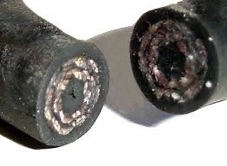
Since you now know that you need to replace the lines eventually why not use the very best, after all, your life depends on it.
And what is the very best? you may ask.
And the answer is: What racecar drivers use, which are steel-braided, reinforced lines with a teflon inner lining and a tough protective outer sleeve.
These lines are generally for off road use only but there are several that have gone though rigorous manufacturing and testing procedures and are DOT certified for street use as well. These are individually tested to 3000 psi and are manufactured and packaged in clean-rooms environments.
And what makes these lines so special?
First, their construction:
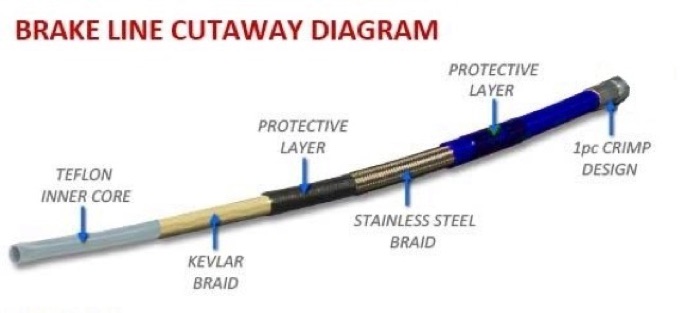
They are made from various layers which are designed to offer the best performance, protection and longevity as well as maintaining the hard brake pedal feel that we all want.
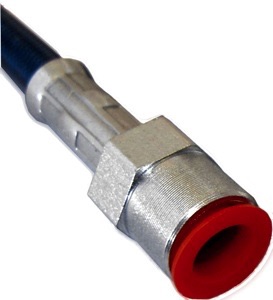
The inner teflon line is as good as it gets in blocking the water molecules from getting into the brake fluid and the kevlar and steel braids give the structural strength to the line which keeps it flexible but doesn’t allow ballooning or expansion of the line maintaining the proper brake pedal feel which permits finesse in brake pedal modulation such as when trail-braking at the track.
These brake lines are usually referred to as steel-braided brake lines but as I explained before most are not DOT certified for street use.
So, do your diligence and get a set of DOT certified, steel-braided, flexible brake lines before you go do your next DE, AX or fun run in your street-legal Porsche.
For additional information on Steel Braided Brake Lines and more, please visit my website: www PedrosGarage.com.
Happy Porsche’ing,
Ⓒ2015 Technolab / PedrosGarage.com

